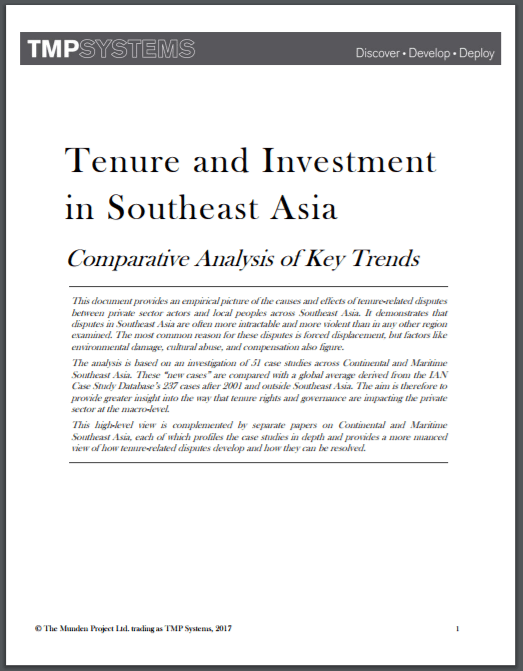Date: October 3, 2017
This document provides an empirical picture of the causes and effects of tenure-related disputes between private sector actors and local peoples across Southeast Asia. It demonstrates that disputes in Southeast Asia are often more intractable and more violent than in any other region examined. The most common reason for these disputes is forced displacement, but factors like environmental damage, cultural abuse, and compensation also figure.
The analysis is based on an investigation of 51 case studies across Continental and Maritime Southeast Asia. These “new cases” are compared with a global average derived from the IAN Case Study Database’s 237 cases after 2001 and outside Southeast Asia. The aim is therefore to provide greater insight into the way that tenure rights and governance are impacting the private sector at the macro-level.
This high-level view is complemented by separate papers on Continental and Maritime Southeast Asia, each of which profiles the case studies in depth and provides a more nuanced view of how tenure-related disputes develop and how they can be resolved.
https://doi.org/10.53892/TKKW9907

